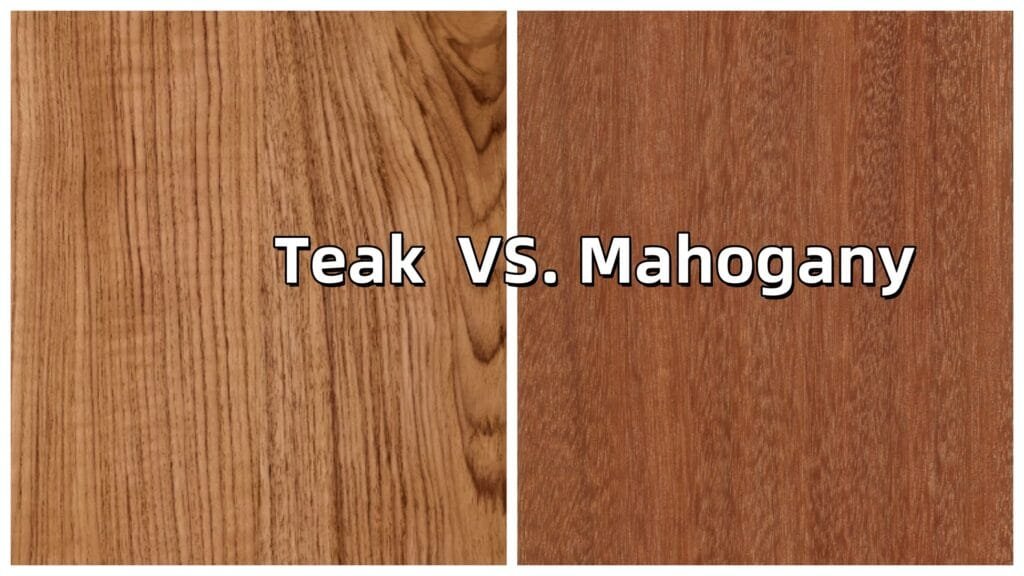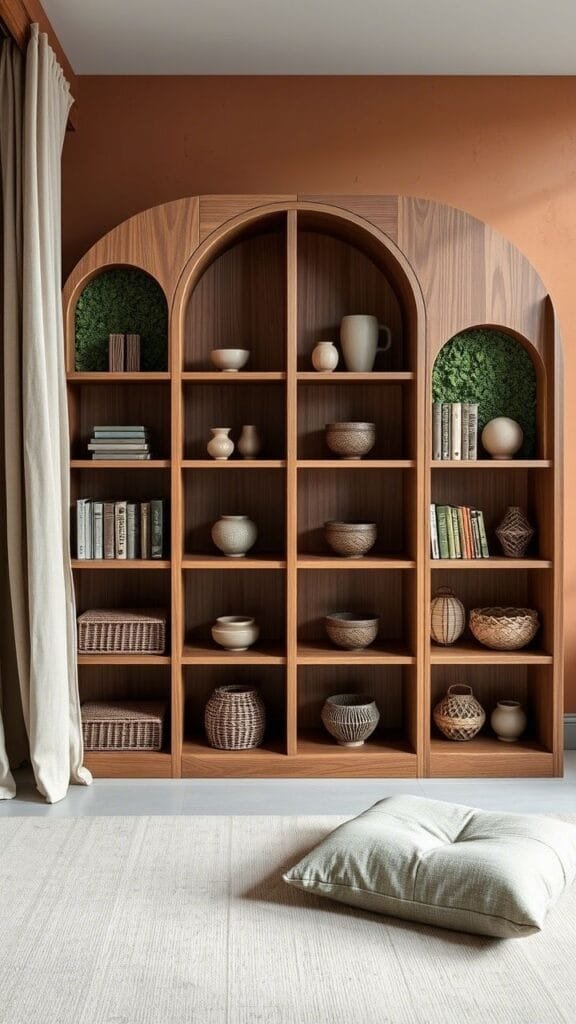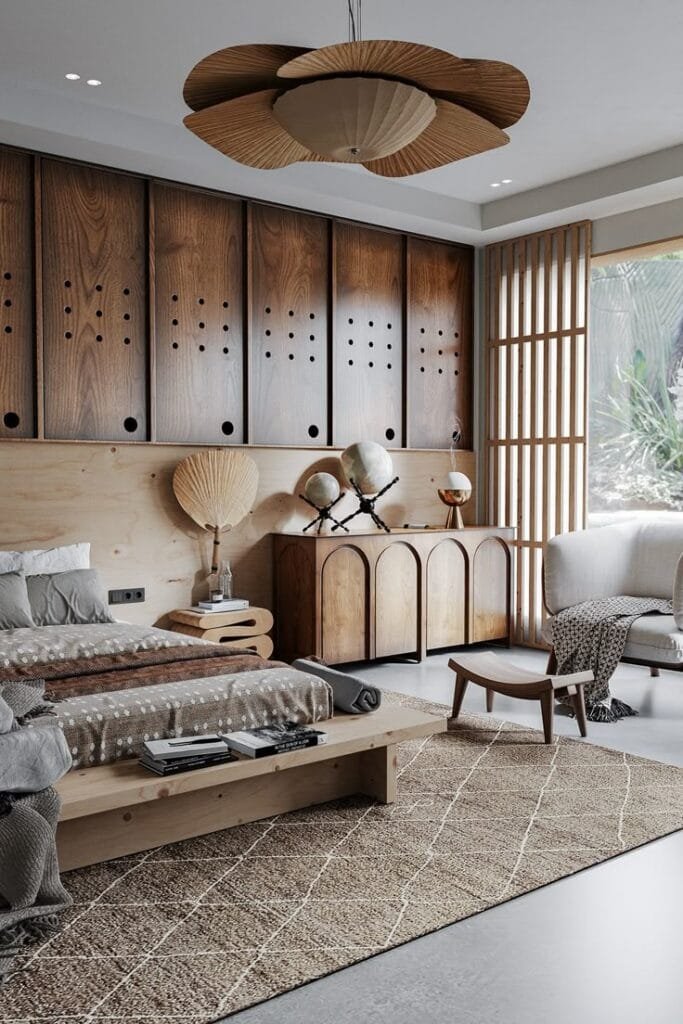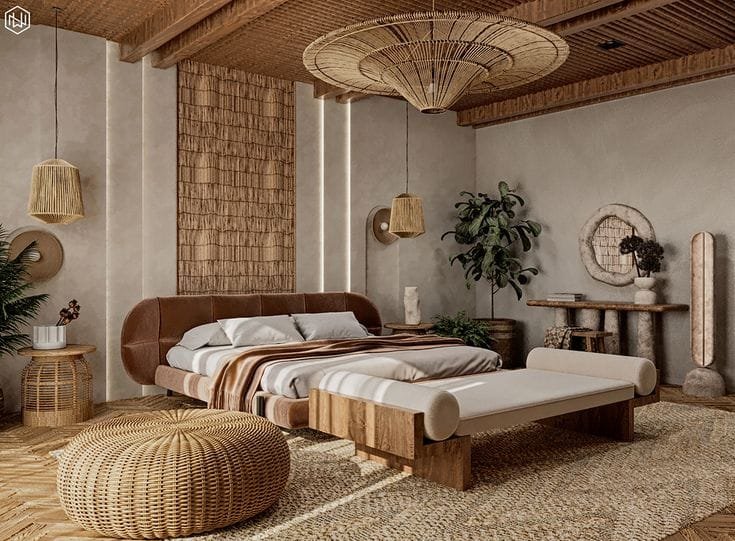The selection of premium wood materials for hotel furniture represents one of the most critical decisions in hospitality design, directly influencing guest satisfaction, operational costs, and brand positioning. Among the top-tier hardwood options, teak and mahogany furniture stand out as the gold standards for luxury hospitality environments. This comprehensive comparison explores every aspect of these two exceptional materials, providing hotel owners, designers, and procurement professionals with the insights needed to make informed investment decisions.

Teak furniture and mahogany furniture both command premium prices and exceptional reputations in the hospitality industry, yet they differ significantly in their characteristics, applications, and long-term performance. Understanding these differences is crucial for hoteliers seeking to balance aesthetic appeal with operational efficiency and guest satisfaction. The choice between teak vs mahogany often determines not only the visual character of a property but also maintenance requirements, replacement cycles, and overall return on investment.
This guide examines four essential aspects of teak and mahogany hotel furniture: fundamental material characteristics and aesthetic properties, durability and performance in commercial hospitality environments, cost considerations and procurement strategies, and sustainability factors affecting modern hotel operations. Each section provides actionable insights backed by industry expertise and real-world applications to help you navigate the complex landscape of luxury hotel furniture selection.
Understanding Teak and Mahogany: Core Characteristics and Applications
Teak wood furniture originates from the tropical hardwood Tectona grandis, primarily harvested in Southeast Asian countries including Myanmar, Thailand, and India. This premium hardwood features distinctive golden-brown coloration with natural oil content that provides inherent protection against moisture, insects, and decay. Teak furniture exhibits straight grain patterns with occasional wavy variations that create visual interest while maintaining structural integrity essential for commercial applications.

Mahogany furniture derives from several species within the Swietenia genus, traditionally sourced from Central and South America, with additional varieties from West Africa. Genuine mahogany displays rich reddish-brown hues that deepen over time, complemented by straight, consistent grain patterns that respond beautifully to various finishing techniques. The wood’s medium density and excellent workability make it highly valued for intricate furniture designs and custom millwork applications.
Table 1: Teak vs Mahogany Physical Characteristics
| Property | Teak | Mahogany |
|---|---|---|
| Color Range | Golden-brown to amber | Reddish-brown to deep red |
| Grain Pattern | Straight with occasional waves | Straight and consistent |
| Natural Oil Content | High (water-resistant) | Low (requires treatment) |
| Janka Hardness Rating | 1,000-1,155 lbf | 800-900 lbf |
| Density | 41 lbs/cubic foot | 34 lbs/cubic foot |
| Geographic Origin | Southeast Asia | Central/South America |
Commercial applications for both materials span the full spectrum of hotel furniture requirements, though each excels in specific environments. Teak hotel furniture dominates outdoor applications including pool decks, terraces, and garden seating due to its natural weather resistance and minimal maintenance requirements. Indoor applications include luxury guest room furniture, executive suites, and high-traffic lobby areas where durability is paramount.
Mahogany hotel furniture finds its strongest applications in interior environments where aesthetic appeal takes precedence. Executive boardrooms, luxury suites, fine dining establishments, and reception areas benefit from mahogany’s rich coloration and sophisticated appearance. The wood’s excellent response to staining and finishing allows for consistent brand color schemes across multiple furniture pieces.

Case Study: The Ritz-Carlton Bali Resort Furniture Selection
The Ritz-Carlton Bali implemented a strategic combination of both materials, utilizing teak furniture for all outdoor areas including beachfront loungers, poolside dining sets, and terrace furniture. The property selected mahogany furniture for interior applications including guest room wardrobes, executive lounge furniture, and restaurant cabinetry. This dual approach achieved cost optimization while maximizing each material’s natural advantages, resulting in 15% lower maintenance costs compared to single-material strategies.
Workability characteristics differ significantly between these materials, affecting custom furniture production and installation requirements. Teak’s density and natural oil content require specialized tools and techniques, particularly for machining and joining operations. The wood’s natural oils can interfere with certain adhesives and finishes, necessitating specific preparation procedures for optimal results.
Mahogany’s softer nature facilitates easier cutting, shaping, and sanding operations, making it preferred for intricate designs and detailed millwork. The wood accepts stains uniformly and bonds well with most adhesives, simplifying manufacturing processes and reducing production costs. These workability advantages often translate to 20-30% lower custom furniture costs compared to equivalent teak pieces.
Durability and Performance in Commercial Hotel Environments
Teak’s exceptional durability stems from its unique combination of natural oils, dense cellular structure, and inherent resistance to biological degradation. The wood’s high silica content provides natural protection against termites and other wood-boring insects, while natural teak oils create a barrier against moisture penetration and fungal attack. These characteristics enable teak hotel furniture to maintain structural integrity and aesthetic appeal for 15-25 years in commercial hospitality environments.
Weather resistance represents teak’s most significant advantage over mahogany and most other hardwoods. Teak furniture exposed to outdoor conditions develops a natural silver-gray patina that actually enhances weather protection without compromising structural integrity. The material’s dimensional stability prevents warping, cracking, and joint failure even under extreme temperature and humidity fluctuations common in tropical resort environments.
Table 2: Durability Performance Comparison
| Performance Factor | Teak | Mahogany |
|---|---|---|
| Weather Resistance | Excellent (natural oils) | Good (requires treatment) |
| Insect Resistance | Excellent (natural silica) | Moderate (needs treatment) |
| Moisture Absorption | Very Low | Moderate |
| Scratch Resistance | High (Janka 1,155) | Moderate (Janka 900) |
| Expected Lifespan | 15-25 years | 10-15 years |
| Maintenance Frequency | Annual cleaning | Quarterly treatments |
Mahogany’s durability profile focuses on indoor applications where controlled environments maximize the wood’s natural strengths. Mahogany furniture exhibits excellent structural stability and resistance to normal wear patterns in hotel guest rooms and public areas. The wood’s medium density provides adequate resistance to denting and scratching while maintaining workability for repairs and refinishing operations.
Maintenance requirements differ substantially between these materials, significantly impacting long-term operational costs. Teak furniture requires minimal maintenance beyond annual cleaning and occasional oil treatment to maintain optimal appearance. The wood’s natural properties eliminate the need for protective coatings or frequent refinishing, reducing both material costs and operational disruption.
Mahogany furniture maintenance demands more frequent attention to preserve appearance and structural integrity. Quarterly cleaning, semi-annual protective treatments, and periodic refinishing ensure optimal performance throughout the furniture’s lifecycle. Indoor mahogany pieces typically require refinishing every 5-7 years, while outdoor applications need annual protective coatings.
Case Study: Shangri-La Singapore Hotel Maintenance Program
Shangri-La Singapore’s comprehensive furniture maintenance program demonstrates the practical implications of material selection. Their teak outdoor furniture requires only annual cleaning and bi-annual oil treatments, generating maintenance costs of $45 per piece annually. Comparable mahogany indoor furniture requires quarterly treatments and refinishing every six years, resulting in annual maintenance costs of $125 per piece. This 180% cost difference influenced the property’s material selection strategy for subsequent renovations.
Load-bearing capabilities and structural performance vary between these materials based on their physical properties and grain characteristics. Teak’s higher density and interlocked grain structure provide superior load-bearing capacity, making it ideal for heavy-duty applications including bed frames, large dining tables, and structural elements in custom millwork installations.
Commercial stress testing reveals significant performance differences under hospitality usage patterns. Teak furniture maintains structural integrity through 50,000+ usage cycles typical of hotel furniture applications, while mahogany pieces begin showing stress indicators around 35,000 cycles. This durability advantage translates to extended replacement cycles and lower total cost of ownership for high-traffic applications.
Cost Analysis and Procurement Considerations
Teak furniture pricing reflects its premium status and exceptional performance characteristics, with costs typically ranging 40-60% higher than comparable mahogany pieces. Raw teak lumber commands premium prices due to long growth cycles, sustainable harvesting requirements, and increasing global demand from luxury markets. Hotel-grade teak furniture typically costs $2,500-$8,000 per piece depending on size, complexity, and customization requirements.
Mahogany furniture costs offer more accessible entry points into luxury hardwood furniture while maintaining sophisticated aesthetics. Genuine mahogany pieces range from $1,500-$5,000 per item, providing significant cost advantages for properties requiring extensive furniture quantities. The wood’s easier workability and faster production times contribute to lower manufacturing costs compared to teak alternatives.
Table 3: Hotel Furniture Cost Comparison Analysis
| Furniture Category | Teak Price Range | Mahogany Price Range | Cost Difference |
|---|---|---|---|
| Guest Room Beds | $3,500-$6,500 | $2,200-$4,000 | 35-40% higher |
| Dining Tables | $4,000-$8,000 | $2,500-$5,000 | 40-50% higher |
| Wardrobes | $2,800-$5,200 | $1,800-$3,200 | 35-45% higher |
| Lounge Seating | $2,000-$4,500 | $1,200-$2,800 | 45-55% higher |
| Outdoor Sets | $5,000-$12,000 | $3,200-$7,500 | 40-50% higher |
Total cost of ownership calculations must consider initial procurement costs, maintenance expenses, replacement cycles, and operational factors throughout the furniture’s lifecycle . Teak furniture’s higher initial investment often proves cost-effective over 15-20 year periods due to minimal maintenance requirements and extended replacement cycles. Properties with outdoor furniture requirements particularly benefit from teak’s weather resistance and durability advantages.

Procurement strategies vary significantly based on project scope, timeline, and customization requirements. Teak furniture procurement typically requires 16-24 week lead times due to limited supplier networks and complex manufacturing processes. Strategic procurement planning and early commitment to suppliers often secure better pricing and delivery schedules for large hotel projects.
Case Study: Four Seasons Resort Langkawi Procurement Strategy
Four Seasons Resort Langkawi implemented a hybrid procurement approach combining teak outdoor furniture with mahogany indoor pieces across 91 pavilions and suites. The strategy involved bulk purchasing negotiations for standardized teak poolside furniture, achieving 25% cost savings through volume commitments. Custom mahogany millwork for guest room interiors utilized local craftsmen, reducing costs by 35% while supporting community development initiatives.
Financing considerations for luxury hotel furniture often involve specialized leasing arrangements or extended payment terms to manage cash flow impacts. Teak furniture investments qualify for accelerated depreciation schedules in many jurisdictions, improving overall project economics. The material’s proven durability and value retention support favorable financing terms compared to lower-grade alternatives.
Market availability and supplier networks differ substantially between these materials, affecting procurement timing and cost predictability. Teak suppliers operate through specialized networks with limited production capacity, requiring early commitment and premium pricing for guaranteed delivery. Mahogany suppliers offer broader availability and more competitive pricing through established distribution channels.
Sustainability and Environmental Impact Assessment
Sustainable forestry practices have become critical factors in hotel furniture procurement as properties seek to meet environmental certifications and guest expectations. Teak sustainability depends heavily on sourcing practices, with plantation-grown timber offering the most environmentally responsible option. Certified teak plantations in Indonesia, Costa Rica, and other tropical regions provide renewable timber sources with 25-30 year harvest cycles.
Mahogany sustainability faces greater challenges due to historical deforestation and slower regeneration rates compared to plantation alternatives. Certified mahogany from responsibly managed forests provides environmentally acceptable options, though verification of sustainable practices requires careful supplier screening and documentation review.
Table 4: Environmental Impact Comparison
| Sustainability Factor | Teak | Mahogany |
|---|---|---|
| Forest Certification Options | FSC, PEFC available | Limited FSC availability |
| Plantation Growth | 25-30 year cycles | 40-60 year natural growth |
| Carbon Footprint | Moderate (plantation) | High (natural forest) |
| Transportation Distance | Asia to global markets | Americas to global markets |
| Renewable Sourcing | Good (plantations) | Limited (slow growth) |
| LEED Certification Points | 2-3 points possible | 1-2 points possible |
Carbon footprint calculations must consider transportation distances, processing requirements, and end-of-life disposal options. Teak furniture sourced from Southeast Asian plantations typically involves longer shipping distances to European and American markets, increasing transportation-related emissions. However, the material’s extended lifespan and reduced replacement frequency often offset transportation impacts over the furniture’s lifecycle.
Green building certifications including LEED, BREEAM, and local environmental standards increasingly influence hotel furniture selection decisions. Certified sustainable teak contributes to green building points through responsible sourcing and material durability criteria. The wood’s natural preservation properties eliminate the need for chemical treatments that could impact indoor air quality ratings.
Case Study: 1 Hotels Brooklyn Bridge Sustainable Furniture Program
1 Hotels Brooklyn Bridge implemented a comprehensive sustainable furniture program featuring certified teak outdoor furniture and reclaimed mahogany interior pieces. The teak components sourced from FSC-certified Indonesian plantations contributed to the property’s LEED Gold certification while providing 20+ year durability projections. Reclaimed mahogany elements added character while supporting waste reduction goals and cost management objectives.
End-of-life considerations affect long-term environmental impact assessments for hotel furniture investments. Teak furniture maintains value for resale or repurposing applications due to its durability and timeless aesthetic appeal. The material’s natural preservation properties enable successful reclamation and reuse in new applications, supporting circular economy principles.
Alternative material options continue evolving as sustainability concerns influence hospitality design decisions. Engineered wood products with sustainability certifications offer cost-effective alternatives to solid hardwoods while meeting environmental objectives. However, these alternatives typically require more frequent replacement and may not achieve the aesthetic standards expected in luxury hospitality environments.

Conclusion
The choice between teak and mahogany hotel furniture requires careful evaluation of multiple factors including initial costs, long-term performance, maintenance requirements, and sustainability considerations. Teak furniture offers superior durability, weather resistance, and low maintenance requirements that often justify premium pricing for outdoor applications and high-traffic environments. The material’s natural preservation properties and 15-25 year lifespan provide excellent long-term value despite higher initial investment.
Mahogany furniture presents compelling advantages for interior applications where aesthetic appeal and workability take precedence over extreme durability requirements. The material’s lower initial costs, excellent finishing characteristics, and sophisticated appearance make it ideal for guest room furniture, millwork, and decorative applications where controlled environments optimize performance.
Hybrid approaches combining both materials often provide optimal solutions for comprehensive hotel furniture programs. Strategic material selection based on specific application requirements maximizes each wood’s natural advantages while managing overall project costs. Properties implementing mixed-material strategies typically achieve 20-30% cost savings compared to single-material approaches while maintaining consistent quality standards.
Future considerations should include evolving sustainability requirements, changing guest expectations, and advancing manufacturing technologies that may influence material selection criteria. Properties investing in either material should prioritize certified sustainable sources, implement comprehensive maintenance programs, and plan for strategic replacement cycles that optimize both performance and cost-effectiveness throughout the furniture’s operational lifetime.
FAQ Section
What is the typical lifespan difference between teak and mahogany hotel furniture?
Teak hotel furniture typically lasts 15-25 years in commercial hospitality environments due to its natural oil content and superior hardness rating, while mahogany furniture generally provides 10-15 years of service life with proper maintenance. Teak’s inherent weather resistance and insect protection extend its lifespan significantly, particularly in outdoor applications where mahogany would require extensive protective treatments. The longer lifespan often justifies teak’s higher initial cost through reduced replacement frequency and lower total cost of ownership calculations.
Which material requires less maintenance in hotel environments?
Teak furniture requires significantly less maintenance than mahogany, needing only annual cleaning and occasional oil treatments to maintain optimal appearance and performance. Mahogany furniture demands quarterly cleaning, semi-annual protective treatments, and refinishing every 5-7 years to preserve its aesthetic appeal and structural integrity. Hotels typically spend 60-70% less on teak maintenance compared to mahogany over the furniture’s operational lifetime, making teak particularly attractive for properties with extensive outdoor furniture requirements or limited maintenance staff.
How do sustainability certifications compare between teak and mahogany?
Certified teak from plantation sources offers excellent sustainability credentials through FSC and PEFC certifications, with 25-30 year harvest cycles supporting renewable forestry practices. Sustainable mahogany options are more limited due to slower growth rates and historical deforestation concerns, though responsible suppliers offer certified products from managed forests. Teak plantations provide more predictable and scalable sustainable sourcing compared to natural mahogany forests, making certified teak the preferred choice for hotels pursuing comprehensive environmental certifications.
What are the key factors influencing the cost difference between these materials?
Teak’s premium pricing reflects its longer growth cycles, limited sustainable sources, specialized harvesting requirements, and exceptional performance characteristics that command market premiums. Manufacturing costs for teak furniture are higher due to the wood’s density and natural oils requiring specialized tools and techniques. Mahogany’s lower costs result from broader supplier networks, easier workability, and faster production times. However, teak’s extended lifespan and minimal maintenance requirements often provide better long-term value despite higher initial investment.
Can these materials be successfully combined in a single hotel project?
Hybrid material strategies combining teak and mahogany are highly effective and commonly implemented in luxury hotel projects. Teak outdoor furniture provides optimal weather resistance and durability for terraces, pools, and garden areas, while mahogany interior pieces offer sophisticated aesthetics and cost efficiency for guest rooms and public spaces. This approach typically reduces overall furniture costs by 20-30% compared to using teak exclusively while maintaining premium quality standards throughout the property.
How do these materials perform in different climate conditions?
Teak furniture excels in all climate conditions due to its natural oil content and dimensional stability, performing exceptionally well in tropical, coastal, and temperate environments without additional protection. Mahogany furniture performs best in controlled indoor environments and temperate climates, requiring protective treatments and regular maintenance in humid or extreme weather conditions. Hotels in coastal or tropical locations typically achieve better long-term results with teak for any furniture exposed to environmental elements, while mahogany remains excellent for climate-controlled interior applications.


